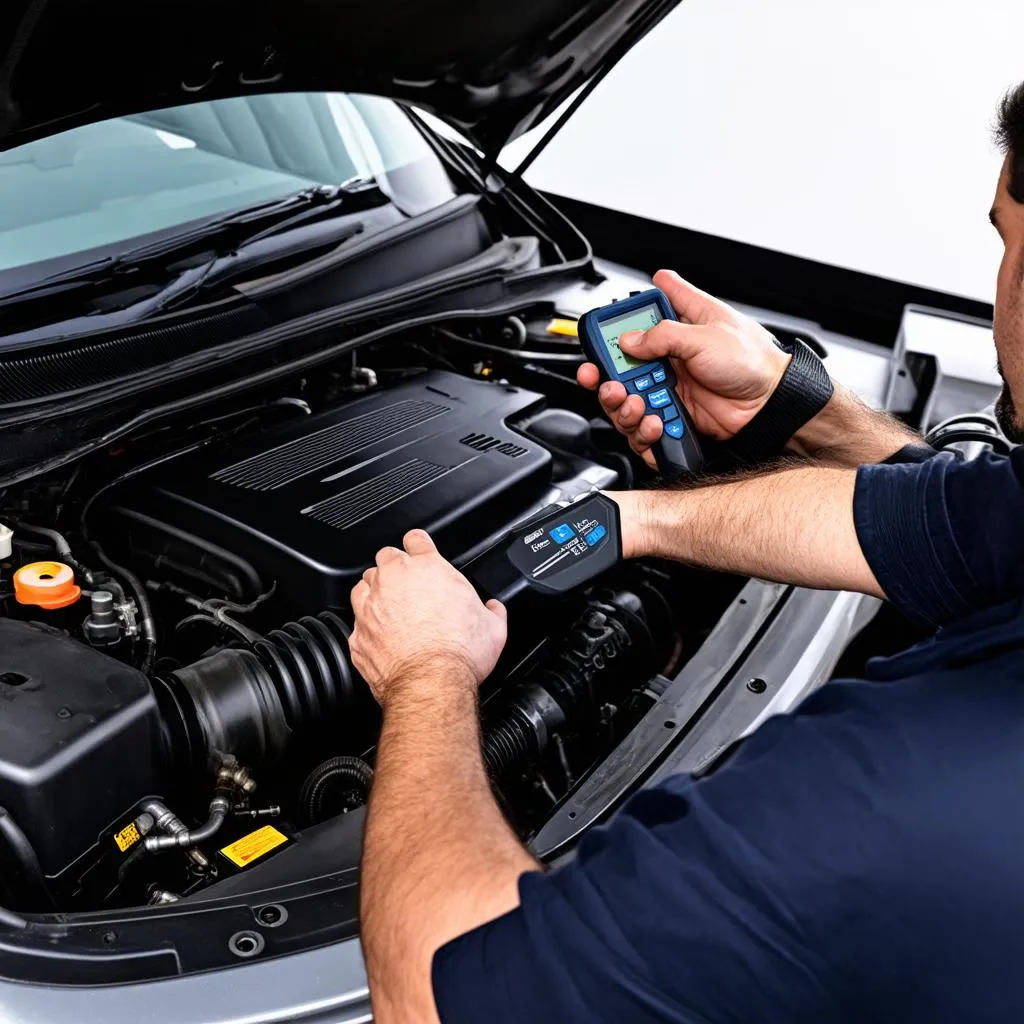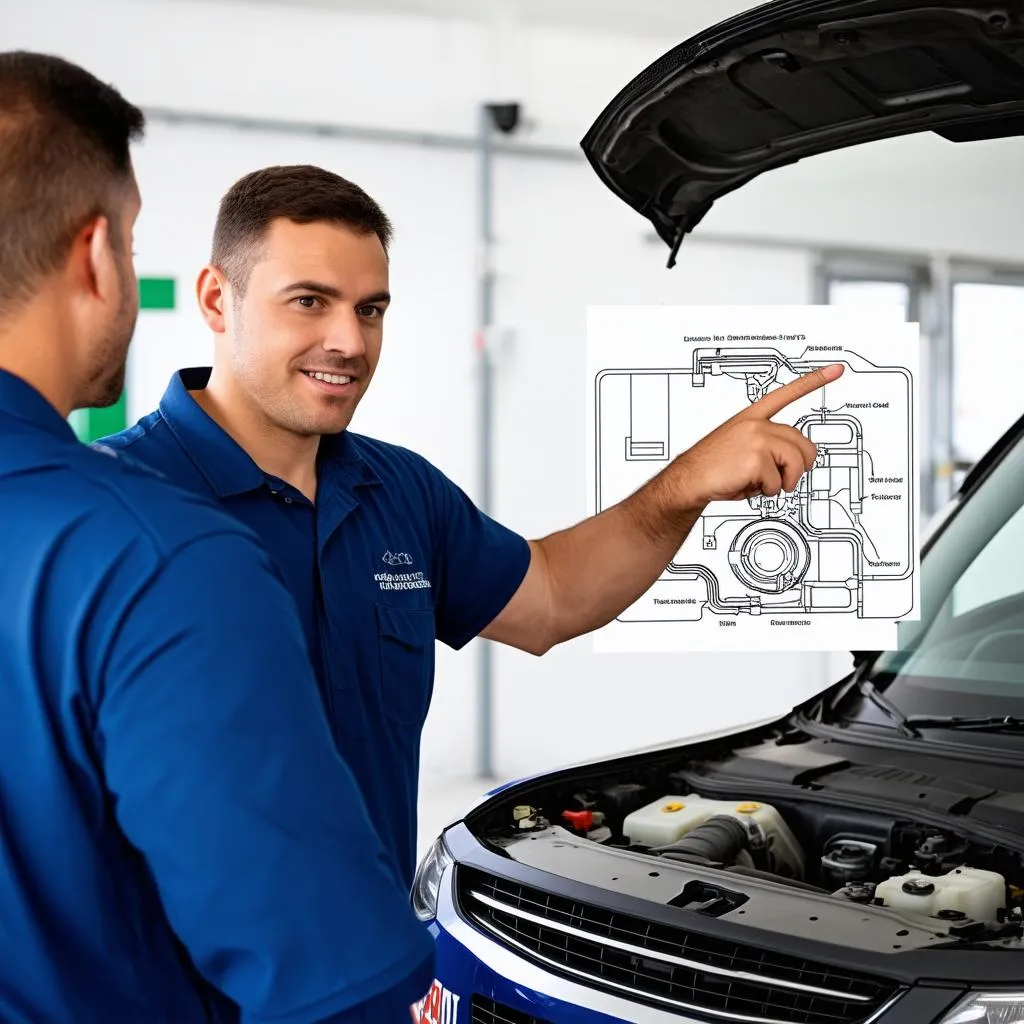“A smooth sea never made a skilled sailor,” goes the old saying. And any car enthusiast knows that even the most reliable vehicles can throw a curveball now and then. One minute you’re cruising down the highway, the wind in your hair (or at least, flowing through the AC vents), the next minute, that dreaded check engine light pops up on your dashboard, leaving you feeling a mix of annoyance and concern.
But fear not, fellow drivers! Just like a seasoned captain navigating choppy waters, we’re here to help you decipher the cryptic language of your car’s onboard computer. Today, we’re diving deep into the world of Obd Code P0113 – a common yet potentially troublesome issue that could indicate your car’s internal thermometer is a bit off-kilter.
What Does Obd Code P0113 Mean?
In the intricate world of automotive diagnostics, OBD code P0113 signals a potential problem with your car’s Intake Air Temperature (IAT) sensor circuit. Think of the IAT sensor as your car’s very own weather station, constantly monitoring the temperature of the air entering the engine. This information is crucial for the Engine Control Unit (ECU) – the brains of your car – to calculate the optimal air-fuel mixture for combustion and ensure peak performance and fuel efficiency.
Why Should I Care About the Air-Fuel Mixture?
Imagine this: you’re baking a cake, and instead of following the recipe, you randomly throw in ingredients without measuring. The result? Probably not a very appetizing treat. Similarly, when your engine doesn’t receive the right air-fuel ratio, it can lead to a whole host of problems, from rough idling and reduced power to increased emissions and even engine damage in severe cases.
P0113: Symptoms, Causes, and Solutions
What Does a Faulty IAT Sensor Feel Like?
Just like a fever can manifest in different ways, a malfunctioning IAT sensor can cause a range of symptoms in your car:
- Illuminated check engine light: This is often the first and most obvious sign.
- Rough idling: Your engine might sound like it’s sputtering or shaking when the car is stopped.
- Hesitation or stumbling during acceleration: Pressing on the gas pedal might not deliver the usual smooth response.
- Reduced fuel economy: You might find yourself making more frequent trips to the gas station.
- Black smoke from the exhaust: This indicates incomplete combustion, often due to a rich fuel mixture.
What Causes Obd Code P0113?
Just like a detective investigating a crime scene, we need to consider the potential culprits behind this error code:
- Faulty IAT sensor: Over time, the sensor itself can wear out, become contaminated, or get damaged.
- Wiring issues: Damaged, corroded, or loose wiring in the sensor circuit can disrupt the signal transmission.
- Intake air leaks: If there’s a leak in the air intake system after the mass air flow (MAF) sensor, the engine might be getting more air than the IAT sensor can measure.
- ECU problems: While less common, a faulty ECU can also misinterpret signals from the IAT sensor.
How Can I Fix P0113?
Before you panic and call a tow truck, here are some steps you can take:
- Check the IAT sensor: Locate the sensor (usually near the air filter box) and inspect it for any visible damage or debris. Cleaning it with an electrical contact cleaner might help.
- Inspect the wiring: Carefully examine the wiring harness connected to the sensor for any signs of wear and tear, loose connections, or corrosion.
- Look for intake leaks: Check for any cracks or loose hoses in the air intake system between the MAF sensor and the engine.
If you’re not comfortable getting your hands dirty, it’s always best to consult a qualified mechanic. They have the tools and expertise to diagnose the problem accurately and recommend the appropriate repairs.
 Car engine with diagnostic tools
Car engine with diagnostic tools
Obd Code P0113 and Your Car’s Feng Shui
In some cultures, cars are seen as more than just machines; they’re considered extensions of our personal space and energy. While there’s no direct correlation between OBD code P0113 and the ancient Chinese practice of Feng Shui, a well-maintained car can certainly contribute to a smoother, more harmonious driving experience.
Think of it this way: a clean and organized car interior can promote mental clarity and reduce stress, while a neglected vehicle filled with clutter might reflect feelings of chaos and disarray.
Maintaining Good Car “Chi”
Just like we strive to create balance and positive energy flow in our homes, we can apply similar principles to our cars:
- Regular cleaning and decluttering: Remove unnecessary items, dust surfaces, and vacuum the interior to create a more inviting and peaceful environment.
- Pleasant scents: Use a subtle air freshener or essential oil diffuser to create a calming and uplifting atmosphere.
- Mindful driving: Practice defensive driving techniques, stay aware of your surroundings, and avoid aggressive behavior on the road.
Frequently Asked Questions About Obd Code P0113
Here are some common questions car owners often have about this specific OBD code:
Can I still drive my car with code P0113?
While it’s generally possible to drive short distances with a P0113 code, it’s not recommended. Driving with a faulty IAT sensor can lead to reduced fuel economy, poor engine performance, and potentially more serious engine problems down the line.
How much does it cost to fix OBD code P0113?
The repair cost can vary widely depending on the root cause and the make and model of your car. Replacing a faulty IAT sensor is usually a relatively inexpensive fix, while addressing wiring issues or ECU problems can be more costly.
Can I fix OBD code P0113 myself?
If you have some mechanical skills and are comfortable working on your car, you might be able to tackle some of the basic troubleshooting steps yourself. However, it’s always best to consult a qualified mechanic for accurate diagnosis and repair.
Other OBD Codes You Should Know
The world of OBD codes is vast, and P0113 is just one of many. Here are a few other common codes related to the engine and emissions systems:
- P0101: Mass Air Flow (MAF) Sensor Circuit Range/Performance Problem
- P0171: System Too Lean (Bank 1)
- P0420: Catalyst System Efficiency Below Threshold (Bank 1)
- P0300: Random/Multiple Cylinder Misfire Detected
Understanding these codes can help you communicate more effectively with your mechanic and make informed decisions about your car’s maintenance.
Need More Help? We’re Just a Message Away!
Feeling overwhelmed by car troubles? Don’t sweat it! Our team of automotive experts is here to help you navigate the often-confusing world of car repairs.
For personalized assistance with diagnostic tools and expert advice, feel free to reach out to us on WhatsApp at +84767531508. We’re available 24/7 to answer your questions and help you get back on the road with confidence.
 Mechanic explaining car problem to customer
Mechanic explaining car problem to customer
Keep Your Car Happy, Keep Yourself Safe
Remember, your car is more than just a mode of transportation. It’s a valuable investment and a companion on life’s journeys. By staying informed about common car problems and taking a proactive approach to maintenance, you can ensure a smoother, safer, and more enjoyable driving experience for years to come.
Looking for more helpful car tips and advice? Be sure to check out our other informative articles on TechCarUSA.com. And don’t forget to share this article with your fellow car enthusiasts to help them decode their car’s cryptic messages!